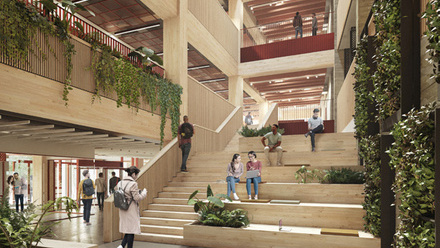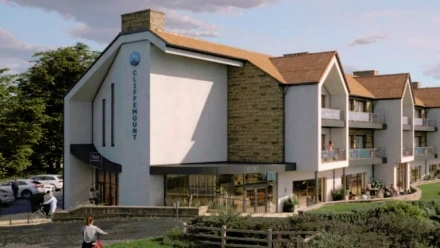Excel toolbar add-on that 'calculates embodied carbon' of designs written by Chartered Architectural Technologist
Developed in association with the PHN, AECB and Building Transparency, this add-on enables Passive House designers to calculate the embodied carbon of a given design within the Passive House Planning Package (PHPP), an easy-to-use planning tool for energy efficiency. Integrated with the Embodied Carbon in Construction Calculator (EC3), PHribbon gives users the power to forecast the carbon emissions impact of their designs.
Tim Martel MCIAT, Chartered Architectural Technologist, Passive House Designer and AECB expert, wrote PHribbon. It is an Excel add-on that makes using PHPP quicker and easier and draws on existing national and global database information for materials and products' environmental impact. It estimates cradle-t0-grave carbon emissions, helps users build PHPP models, and includes several useful tools and features.
The PHPP energy balance design tool contains everything necessary for designing a properly functioning Passive House, a building standard that is energy efficient, comfortable, affordable and ecological. The program prepares an energy balance and calculates the annual energy demand of the building based on the user input relating to the building's characteristics.
Ken Levenson, Executive Director of PHN said: “As more leaders across the building industry are prioritizing a positive climate impact for their structures, by utilizing the PHribbon, designers can tackle both operational and embodied building carbon emissions within the PHPP tool, and comprehensively push for carbon neutral and negative buildings across the US.”
PHribbon leverages existing information beyond just energy, pulling from Building Transparency’s EC3 database, and EPA carbon figures for electricity, the end-of-life of materials, and the end-of-life pathway.
The current UK version of PHribbon Version 4.04 is available through the AECB.
Tim Martel said: “The UK version gives PHPP and non-PHPP users a simple and quick way to check their designs against LETI and the recently updated RIBA targets. US and Canadian versions give PH Designers quicker and easier access to their EC3 database within PHPP. In each case the advantage of using the version in PHPP (PHribbon) is that it also calculates the Operational CO2 and combines that with the Embodied on to a single graph.”





